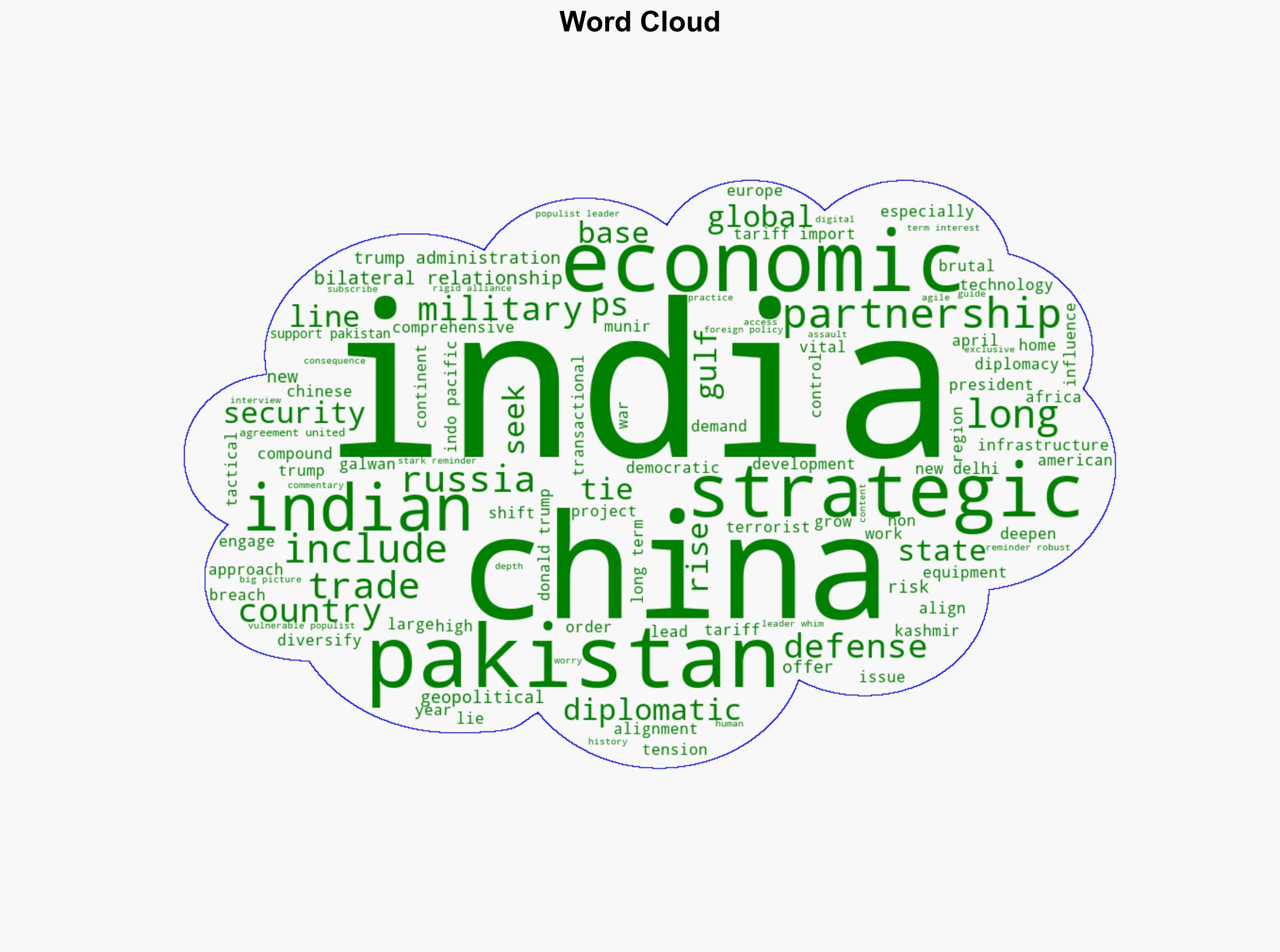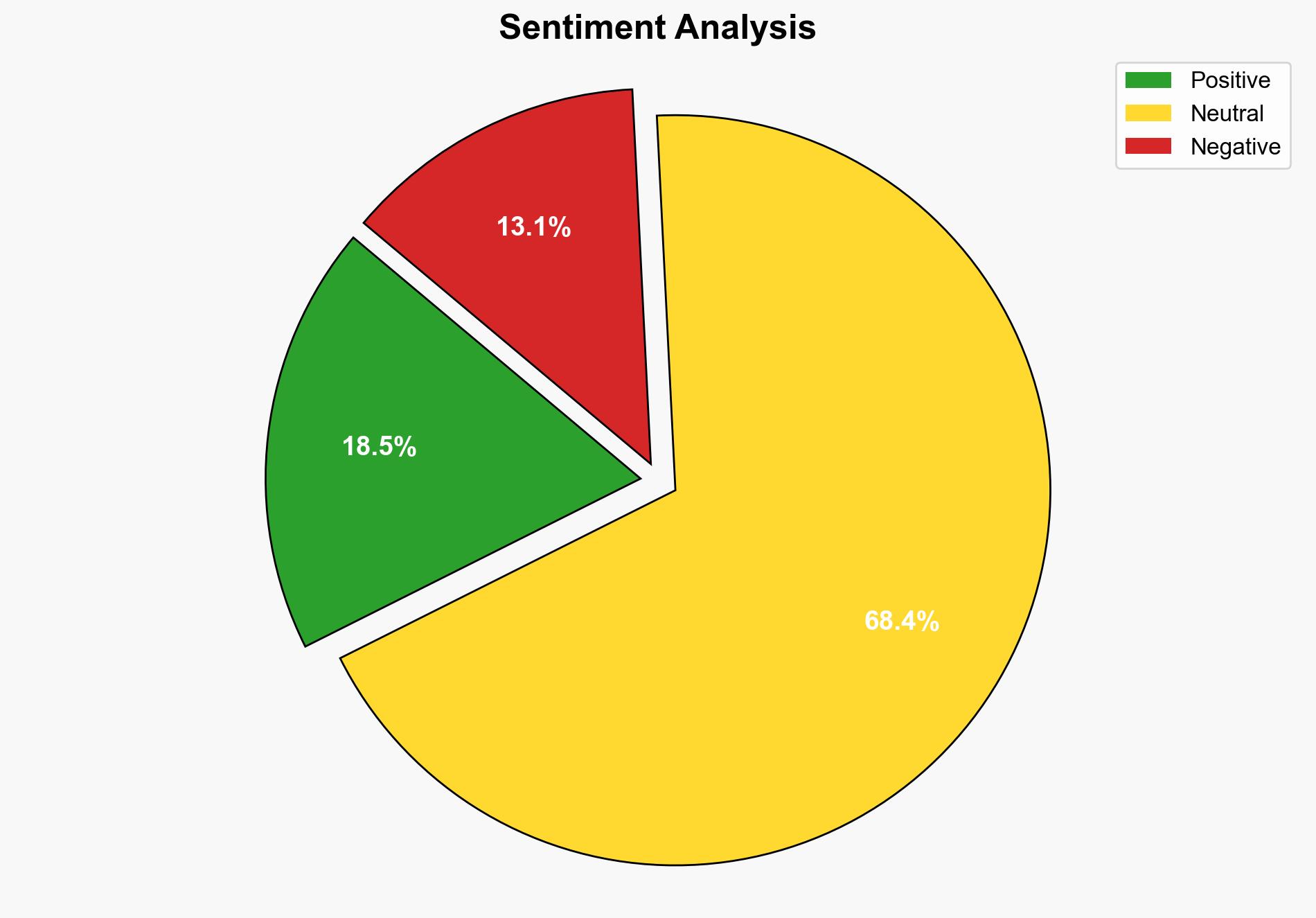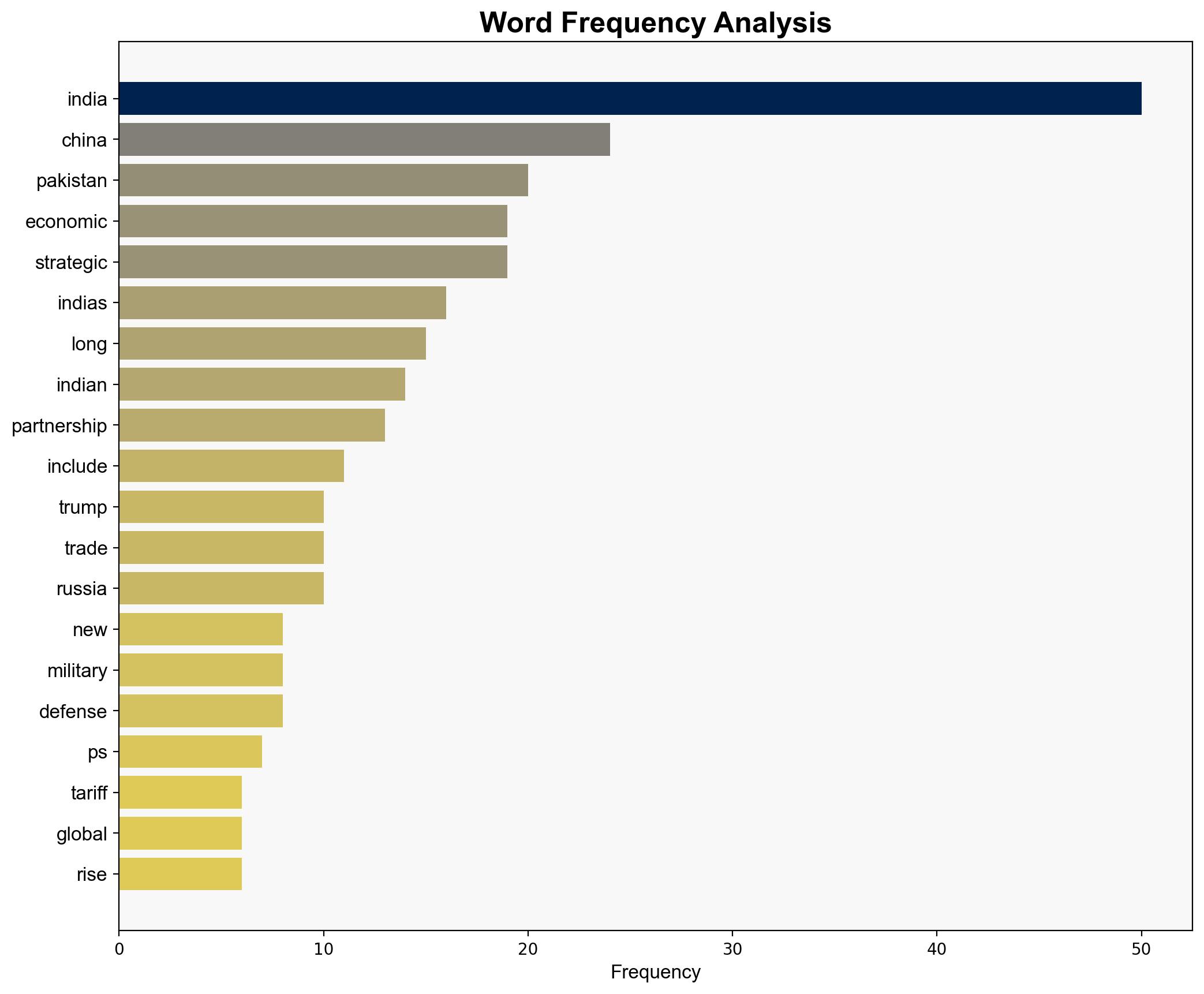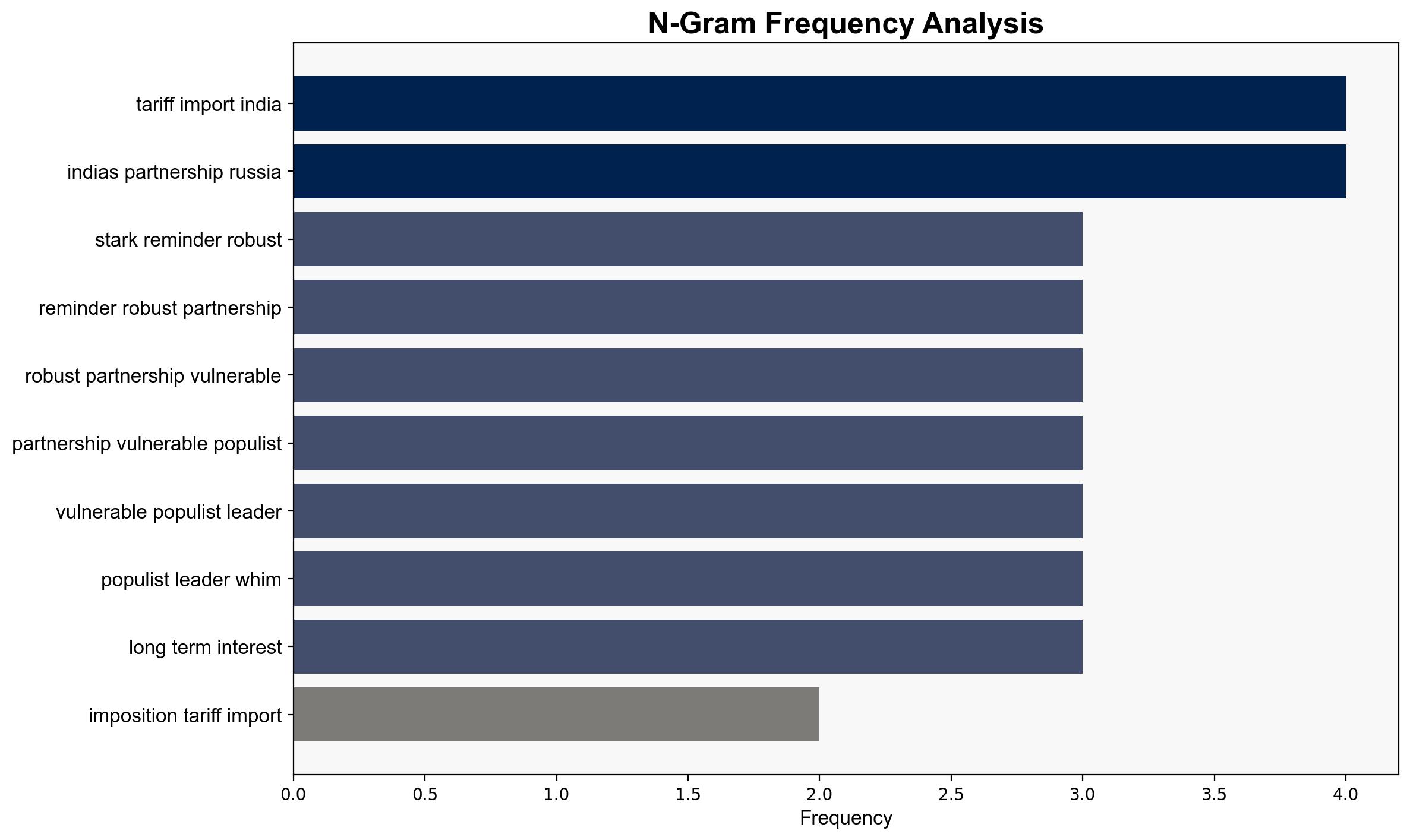Multi-Alignment Is Indias Superpower – Project Syndicate
Published on: 2025-08-29
Intelligence Report: Multi-Alignment Is India’s Superpower – Project Syndicate
1. BLUF (Bottom Line Up Front)
India’s strategy of multi-alignment is both a strength and a vulnerability in the current geopolitical climate. The most supported hypothesis is that India will continue to leverage its non-alignment policy to balance relations with major powers, despite challenges from U.S. economic nationalism and regional security threats. Confidence level: Moderate. Recommended action: Enhance diplomatic engagement and economic resilience to mitigate external pressures.
2. Competing Hypotheses
1. **Hypothesis A**: India will successfully maintain its multi-alignment strategy, using its non-alignment principles to navigate tensions with the U.S., China, and Pakistan, thereby preserving its strategic autonomy.
2. **Hypothesis B**: India’s multi-alignment strategy will face significant challenges, leading to a forced realignment with either the U.S. or China due to escalating economic and security pressures.
Using ACH 2.0, Hypothesis A is better supported due to India’s historical success in balancing relations and its strategic importance in the Indo-Pacific region. However, Hypothesis B cannot be dismissed given the increasing economic nationalism from the U.S. and China’s aggressive regional posture.
3. Key Assumptions and Red Flags
– **Assumptions**: India’s diplomatic agility will continue to be effective; U.S. tariffs are temporary and negotiable; China and Pakistan’s alignment will not escalate beyond current levels.
– **Red Flags**: Rising U.S. protectionism; China’s military support to Pakistan; potential for increased regional conflicts.
– **Blind Spots**: Underestimating the impact of domestic political changes in India on foreign policy; potential shifts in U.S. or Chinese strategies.
4. Implications and Strategic Risks
– **Economic Risks**: Prolonged U.S. tariffs could harm India’s export economy, necessitating diversification of trade partners.
– **Geopolitical Risks**: Increased China-Pakistan cooperation may embolden aggressive actions in contested regions like Kashmir.
– **Security Risks**: Potential for cyber and terrorist activities targeting Indian interests, exacerbated by regional tensions.
– **Psychological Risks**: Domestic pressure on Indian leadership to adopt a more assertive foreign policy stance.
5. Recommendations and Outlook
- **Mitigation Actions**: Strengthen economic ties with alternative partners to reduce dependency on the U.S. market; enhance military readiness along contested borders.
- **Exploitation Opportunities**: Leverage India’s role in the Indo-Pacific to foster multilateral security and trade agreements.
- **Scenario Projections**:
– **Best Case**: Successful diplomatic negotiations reduce tariffs, and regional tensions stabilize.
– **Worst Case**: Escalation of U.S.-India trade disputes and increased China-Pakistan military cooperation.
– **Most Likely**: Continued diplomatic balancing with periodic economic and security challenges.
6. Key Individuals and Entities
– Donald Trump
– Asim Munir
– China-Pakistan Economic Corridor
7. Thematic Tags
national security threats, cybersecurity, counter-terrorism, regional focus




